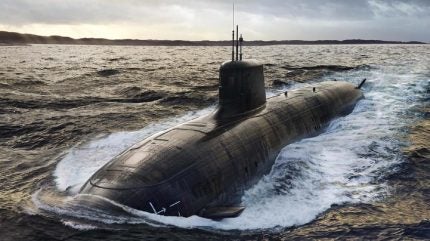
In response to escalating geopolitical tensions in the Indo-Pacific, Australia will provide investment over $45bn in defence from 2024 to 2029, focusing on submarines.
GlobalData’s recent “Australia Defense Market 2024-29” report highlights acquisitions, including nuclear-powered submarines under the AUKUS agreement, next-generation frigates, and military aircraft.
The AUKUS pact and Australia’s $21.6bn submarine investment
Australia is expanding its defence capabilities, with a planned investment of over $45bn between 2024 and 2029. According to GlobalData’s “Australia Defense Market 2024-2029” report, this surge in defence spending is driven by the need to counter growing security threats in the Indo-Pacific region, where geopolitical tensions are intensifying.
Australia’s commitment to the AUKUS alliance is central to this defence strategy, a trilateral security pact with the United States and the United Kingdom. The report highlights that under AUKUS, Australia will invest $21.6bn in developing nuclear-powered submarines. These submarines, part of the SSN-AUKUS project, will enhance Australia’s ability to conduct prolonged underwater operations, an asset in the contested waters of the Indo-Pacific.
Since signing the AUKUS pact in September 2021, Australia has made progress toward acquiring a nuclear-powered submarine fleet under Pillar I of the agreement. The AUKUS framework includes hosting UK Astute-class and US Virginia-class submarines starting in 2027 and planning for the domestic production of at least three Virginia-class SSNs, with deliveries expected by 2032.
On July 30, 2024, the Royal Australian Navy (RAN) celebrated a milestone as its first sailors graduated with distinction from the US Navy’s Basic Enlisted Submarine School (BESS) in Groton, Connecticut. This achievement under the AUKUS trilateral security pact is a step toward preparing for Australia’s acquisition of Virginia-class submarines by 2030.

US Tariffs are shifting - will you react or anticipate?
Don’t let policy changes catch you off guard. Stay proactive with real-time data and expert analysis.
By GlobalDataAccording to GlobalData’s intelligence on the global submarine market, Australia has 41% of the market for submarines in the Asia-Pacific region.
Enhancing Air Force’s capabilities
Beyond submarines, Australia also focuses on modernising its naval fleet by acquiring new general-purpose frigates. The report reveals that the country has earmarked $6bn for constructing 11 frigates to replace the ageing Anzac-class vessels. These new frigates will be equipped with technologies for enhanced maritime strike capabilities, air defence, and escort missions, ensuring that the Royal Australian Navy remains a force in the region.
In addition to bolstering its naval capabilities, Australia is enhancing its airlift capacity with a $6.4bn investment in 24 C-130J-30 Super Hercules aircraft. These next-generation aircraft will upgrade the Royal Australian Air Force’s ability to conduct various military and humanitarian missions.
In other Royal Australia Air Force developments, on August 7, 2024, the Institute for Public Affairs (IPA) recommended that Australia acquire the US B-21 Raider stealth bomber. The IPA suggests the B-21 as a “Plan B” to supplement the AUKUS initiative, providing a non-nuclear long-range deterrent ahead of the AUKUS nuclear-powered submarines, which are not expected until the early 2040s. This acquisition would offer Australia an immediate boost in strike capability while awaiting the delivery of submarines.
GlobalData’s report emphasises that Australia’s defence market is poised for growth and is driven by these investments. With over $45bn allocated to submarines, frigates, and aircraft, Australia is positioning itself to play a more influential role in maintaining regional security and countering emerging threats in the Indo-Pacific. This defence build-up highlights the country’s commitment to safeguarding its interests in an increasingly volatile global landscape.



